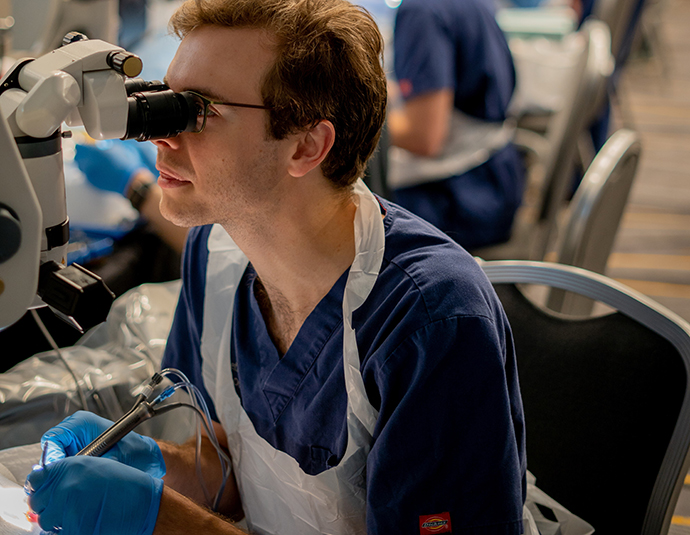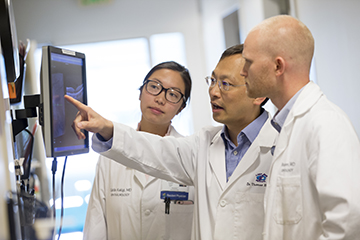
The summer season typically brings to mind lazy days around the pool or leisurely naps in a hammock. But for OHSU Casey Eye Institute’s ophthalmic residency program, this time of year bustles with activity. At the end of June, we bid farewell to our graduating medical residents and on July 1, welcomed the incoming class of trainees.
The five junior residents, who will join the 10 current trainees, reflect a highly competitive residency program whose reputation continues to grow in stature. The journal Ophthalmology Times ranked it among the top 12 programs in the U.S.
Selected from a pool of more than 500 applicants, the new residents not only come from among the nation’s top medical schools with some of the highest test scores, but also demonstrate a commitment to community service and scholarship – ideals that are very much valued in training the next generation of ophthalmologists, says Thomas Hwang, M.D., Casey’s residency program director. “Most have already published research, ranging from pediatrics and quality improvement to neuroscience,” he says.
“Casey especially has people who care deeply about their work,” says new resident Claudine Yee, M.D., explaining why she applied to train here. “It is evident in the way they mentor residents, invest time in patients and conduct world-class research to combat eye disease,” she says.

One of the program’s major draws is the collaborative and supportive culture between faculty and students, says Hwang. “When I go to meetings, I hear other residency program directors complain that the senior residents resist helping the junior ones. I get to brag that we never have that problem.
“This willingness on the part of seniors’ only benefits the junior resident experience,” says Hwang, noting that the first year is particularly challenging as the students begin to hone their eye exam skills. “We encourage our residents to seek out help from seniors, which only improves patient care and causes less stress.”
Such a positive atmosphere enables students to flourish during their time at Casey. This year, all five graduating seniors will go on to specialty fellowships at top programs around the country.
“The best thing about Casey is the culture of kindness and respect. It feels like a big family,” adds Brad Henriksen, M.D., who will remain at Casey to begin a pediatric ophthalmology fellowship.
For Matt Dugan, the program’s biggest strength “is the incredible faculty who work hard to give us the best possible learning opportunities.” As an example, Robert Watze, M.D., “a giant in the field of ophthalmology, well into his 90s, still came to clinic and spent several hours with each of us,” he says.